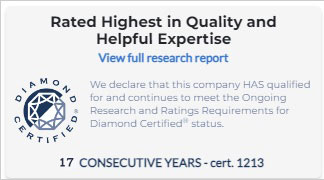Buying in the Bay Area? Here’s the Crucial Step Most People Overlook
- Sep 10, 2025
 Quick Stat Snapshot (So You Know This Isn’t Just Opinion)
Quick Stat Snapshot (So You Know This Isn’t Just Opinion)
- Median single-family home prices in San Francisco hover around $1.27M–$1.43M depending on the source and neighborhood. (Zillow)
- About 86% of home inspections uncover at least one issue (anything from small fixes to major safety/structural concerns). (Ruby Home)
- In California, subterranean and drywood termites are common enough that many experts treat the state as “high-risk” overall. Regular inspections are standard practice here.
If you’re buying in the Bay Area, San Francisco, Oakland, San Jose, or any of the cities stretched between Silicon Valley and Marin, you’re playing in one of the most expensive, complex, and geographically varied housing markets in the U.S. That makes one step more important than most people realize: A focused, local, professional inspection (including pest/termite and geological checks) and using that inspection strategically in your offer.
Questions to Ask Yourself
Have you ever stared at a listing photo and thought, “Wow, that kitchen!” and then wondered what’s behind that gorgeous exterior? Do you want to win a bidding war without paying a surprise $20,000 after move-in? Are you wondering if the hillside property you love might bring slides, rotten joists, or termites?
If you answered yes, keep reading. Because in the Bay Area, where a small structural problem can cost tens of thousands to fix and where local soil, microclimates, and pests behave differently, skipping the right inspection is the single mistake that turns exciting buys into financial headaches.
Inspections: The Crucial Step Most Buyers Miss (And Why It Matters)
Many buyers either waive inspections to be “more competitive” or they get a generic inspection that misses Bay-Area specific risks (termite species, hillside stability, seawall/retaining wall issues, old chimney/soft story risks, etc.). The result: You close on a property that looks fine in photos, then find hidden problems that drain your savings.
Why it matters in the Bay Area specifically:
- Prices are high, so small percentage problems become large dollar problems. (See median prices above.)
- Microclimates and geography matter. A property in a fog belt, a marshy flat, a Redwood-lined slope, or near reclaimed land faces different structural and pest risks.
- Competition pressures buyers. Some waive inspection contingencies to win bids but that’s risky. National reports show a persistent share of buyers waiving inspections; yet inspections still reveal issues in a majority of homes.
What a Bay-Area-Smart Inspection Looks Like (Not All Inspectors Are Equal)
- Thorough General Home Inspection — Standard scope - roof, foundation, electrical, plumbing, HVAC and structure. Make sure the inspector uses a detailed checklist and provides photos and cost estimates for major defects.
- Pest/Termite Inspection — In California, this is not optional. Subterranean and drywood termites are common, and damage can be hidden inside framing and decks. Ask for a wood-destroying-organism (WDO) report.
- Soil/Hillside and Drainage Assessment — If the property sits on or below a slope, or shows grade/drainage issues, get a geotechnical or civil engineer to take a look. Bay Area hillsides and fill soils behave differently across counties.
- Seismic and Foundation-Specific Review — Soft-story, unreinforced masonry, old pier-and-beam foundations — these are real Bay Area things. Ask whether the home needs retrofits (and get cost estimates).
- Mold and Moisture Check — Especially essential in foggy coastal pockets and older homes without modern vapor barriers.
- Specialty Checks as Needed: Chimney/wood stove, septic systems, pool/spa, well water, asbestos (older homes), lead paint (pre-1978 housing).
How to Use the Inspection Strategically (Not Just to “Find Something to Ask For”)
- Turn Inspection Findings into Negotiating Power — Not always a “repair or cancel”. You can ask for credits, price reductions, or have the seller fix critical items with licensed contractors before close. Stats show many buyers use inspection results to negotiate price.
- Decide Your True Walk-Away Line — Before the inspection, know the maximum hidden cost you’ll absorb. If a foundation repair estimate exceeds that, you walk. If you’re emotionally attached and the price is right, negotiate strongly for seller responsibility or escrow holdback.
- Use Inspection to Plan Cash Flow — If the roof will need replacement in two years, price that into your long-term budget now rather than being surprised after closing.
- Leverage Local Knowledge — Inspectors who work the same Bay Area neighborhood will know typical problems (e.g., older Palo Alto homes with asbestos, certain Peninsula lots with drainage issues, Formosan termite hot spots in South Bay, etc.). Ask for references and sample reports.
Also Read: Understanding the Challenges of Termite Control in the Bay Area Compared to the Rest of California
How to Pick the Right Termite Control Company (Short Guide)
When buying in the Bay Area, choosing the right termite company/inspector can save you from hidden repair bills later. Look for:
- Licensing – Confirm they have proper licenses and certifications.
- Local Expertise – Inspectors familiar with Bay Area microclimates know where problems usually hide.
- Services Offered – Check whether they offer affordable termite inspection and treatment packages for your price range.
- Detailed Reports – Ask for sample reports with photos, damage descriptions, and repair recommendations.
- Neutral Advice – A good inspector explains options without pressuring you into costly treatments.
Final Checklist — Before You Sign a Property
- Get a WDO/termite inspection in California.
- Confirm inspector qualifications and read sample reports.
- Order specialty inspections if the property sits on a slope, near water, or has unpermitted work.
- Have contractor estimates for any major items flagged.
- Put firm negotiation strategies in writing before getting the report (credits, seller repairs, escrow holds, etc.).
- Don’t waive inspection unless you fully understand and accept the risks.
HiTech Termite Control
The Bay Area market rewards informed buyers. A strategic inspection tailored to local geology, pest risks, and typical neighborhood problems, is not just “nice to have” - it’s a move that protects your purchase, your renovation budget, and your future resale.
At Hi Tech Termite Control, we’ve spent years helping Bay Area homeowners uncover what others miss. Our licensed inspectors understand the unique challenges of local homes, from San Francisco Victorians to South Bay ranch-style houses, and we use advanced tools to detect even the smallest signs of infestation. Whether you’re in the early stages of buying or just want peace of mind about your current property, our team is here to protect your investment. Book to get your free quote for termite inspections here.
Quick FAQ
Do I need a termite inspection in the Bay Area?
Yes. California’s termite risk is high in many regions; a WDO (wood destroying pests and organisms) report is standard for Bay Area purchases.
Can I waive an inspection to win a bidding war
You can, but it’s risky. Nationwide and local data show a nontrivial share of buyers waive contingencies — but most inspections find issues, so waiving removes protection. Consider other ways to make your offer competitive (flexible closing, higher earnest money, escalation clauses, etc.).
What if the inspector finds major problems?
Use the report to negotiate repairs, credits, or price reductions. If the problem crosses your walk-away threshold, you can cancel under the inspection contingency (if you kept it). Always have a plan before the inspection.
Who pays for the inspection?
Buyer typically pays; it’s an investment in your due diligence. Sellers sometimes pre-inspect, which can be helpful but shouldn’t replace buyer verification.





